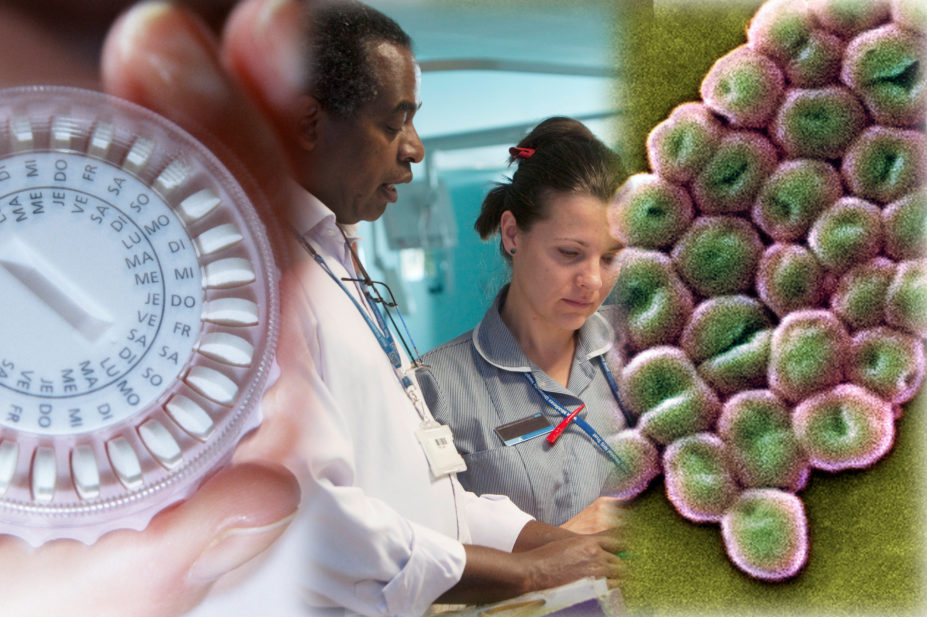
Science Photo Library / MAG
Since its relaunch last year, Clinical Pharmacist has become a leading forum for publishing evidence-based pharmacy practice, perspectives on the future of the science of pharmacy, and review articles on our current knowledge base in relation to particular therapeutic areas and the latest advancements in drug development and medical interventions.
During the course of 2017, Clinical Pharmacist has published 11 review articles and five perspective articles. The section as a whole has attracted over 115,000 page views; the top five most read articles are:
1. A new way to look at acute cough in the pharmacy
Cough is the most common symptom for which people seek medical advice, and patients with cough frequently present to community pharmacy. However, many of the therapies available over the counter are currently recommended based on custom and traditional practice, which is not supported by clinical studies of sufficient quality to meet the standards of modern evidence-based medicine. In this article, Alyn Morice (Hull York Medical School, University of Hull, UK), calls for the removal of the ‘wet’ or ‘dry’ classification for acute cough and proposes a new proposed treatment pathway for cough, based on a recent European evidence-based review.
Does this new treatment model hold promise for making the assessment of cough easier and evidence-based? Read the article here and join the debate by commenting on the article or by sharing on social media.
2. Management of patients with inflammatory bowel disease: current and future treatments
Inflammatory bowel disease (IBD) is characterised by chronic inflammation of the gastrointestinal tract and affects patients’ quality of life. Treatment of IBD involves induction and maintenance of remission. Current available therapies include anti-inflammatory aminosalicylates and corticosteroids, immunosuppressive agents, antibiotics and biologic agents. This article by Sheila Wilhelm (Wayne State University, Eugene Applebaum College of Pharmacy and Health Sciences and Detroit Medical Center, Harper University Hospital, Detroit, MI, United States) and Bryan Love (University of South Carolina College of Pharmacy, Columbia, SC, United States) provides a thorough review of the current treatments available for IBD, as well as potential future treatments undergoing evaluation.
3. Examining the emerging roles for pharmacists as part of the urgent, acute and emergency care workforce
With an increasingly ageing population, presenting with ever more complex health needs, comes the need to radically rethink service provision and the way the ‘front-line’ clinical workforce is deployed. Although a number of locally isolated examples of good practice in UK emergency departments and urgent care settings exist, there is little published evidence to support the role of pharmacists practising clinically in these settings. As a result of the lack of evidence nationally and internationally regarding pharmacists clinically managing patients, HEE West Midlands and its national partners began a three-year research programme in 2013. This article by Matthew Aiello (Health Education England) et al describes this pilot in more detail and outlines how these programmes contribute to the understanding and adoption of pharmacist advanced clinical training, with reference to Health Education England’s plan for pharmacists and their future roles.
Do you agree that enhanced clinical development pathways for pharmacists should be developed? Read the article here and join the debate by commenting or by sharing the link and your thoughts on social media.
4. Establishing the risk related to hormone replacement therapy and cardiovascular disease in women
Hormone replacement therapy (HRT) has been used for more than 60 years to treat menopausal oestrogen deficiency and increase longevity in postmenopausal women. However, following the publication of the Women’s Health Initiative study, the effect of HRT on cardiovascular risk has been the subject of much debate. Observational studies of HRT have consistently shown benefits in coronary heart disease (CHD) reduction. However, several randomised clinical trials have shown no overall benefit in CHD event reduction, probably owing to inappropriate dosing of hormones. Marie-Odile Gerval and John Stevenson (Imperial College London, UK) examine these data and put the results into context, along with data from more recent studies and meta-analyses, which have shown benefit with early postmenopause initiation of HRT.
5. Ceftazidime-avibactam: a novel cephalosporin/β-lactamase inhibitor
Developing new antimicrobial agents is one of the seven key areas for action in the UK five-year antimicrobial resistance strategy. The last article rounding-off our top five provides a general overview of the current published data on ceftazidime-avibactam, a new cephalosporin and β-lactamase inhibitor combination antibiotic, which received marketing authorisation by the European Medicines Agency in April 2016. Authored by Sharanie Sims, Elizabeth Neuner and Robert Bonomo (Cleveland Veterans Affairs Medical Center and Case Western Reserve University School of Medicine, Cleveland, OH, United States), this article describes the mechanism of action and resistance, spectrum of activity, pharmacokinetics and dynamics, as well as the clinical efficacy and safety data for ceftazidime-avibactam.
The top articles from 2017 cover a range of clinical topics, with contributions from globally renowned key opinion leaders, which highlight the global focus and reach of the journal. The full catalogue of articles published in the research section can be found here.
I would be delighted to hear your feedback, receive ideas for future articles and article submissions for consideration for publication — please email me on Michael.Dowdall@rpharms.com or send me a tweet @michael_dowdall
You may also be interested in
What are the views of the RPS and Pharmaceutical Press on AI training using copyrighted materials?

HIV patients should switch to long-acting antiretroviral injectable treatments sooner, study concludes
